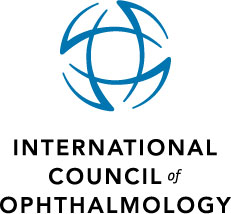| Pentastomiasis of the Lid | |
| Visceral Pentastomiasis by Armillifer spec. Tongue worms or pentastomes are possibly arthropods or are classified in a separate phylum of the helminths. In the genus Armillifer the definite and intermediate host are tropical snakes and mammals, respectively. The worm eggs may be ingested by humans who consider snake meat a delicacy or who are exposed to their excrements. Larvae penetrate the intestinal wall and attach to or enter into various sites including body cavities, lungs, brain and eye. There they transform to nymphs that encapsulate leaving surrounding tissues intact. In human tissue they do generally not survive. When dying they give rise to inflammation with a foreign body reaction and may calcify. – Below a biopsy of the lid from a young child in central Ghana. Histology shows remnants of a dead nymph, namely an almost empty cyst (left; H&E, objective x 2.5) The cuticle can still be seen. It consists of chitin and is surrounded by dense inflammatory infiltrates (right; H&E, objective x 10). | |
| Schmauz, Rolf, Dr.med., Pathologist in general practice, Papenburg, Ems, Germany | |
| B88.9 | |
| Systemic Diseases -> Infections -> Parasites | |
| 6619 |
|
|||||||||||||||
Pentastomiasis of the Lid-------------------------- -------------------------- -------------------------- -------------------------- -------------------------- -------------------------- -------------------------- -------------------------- -------------------------- -------------------------- -------------------------- -------------------------- |
|
||||||||||||||




